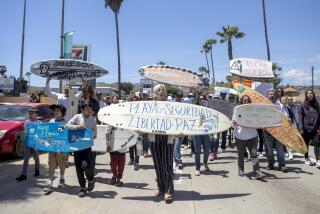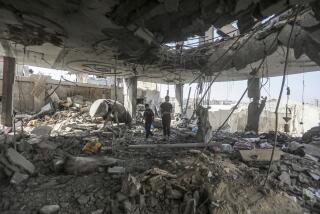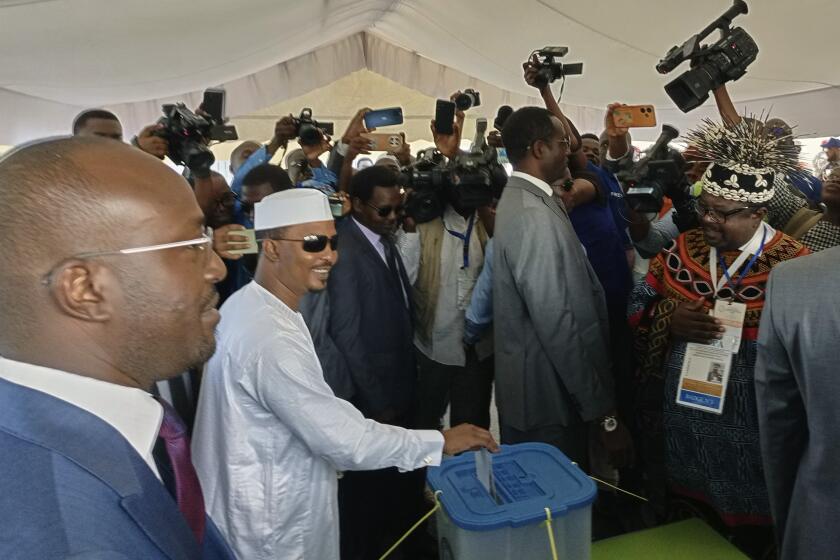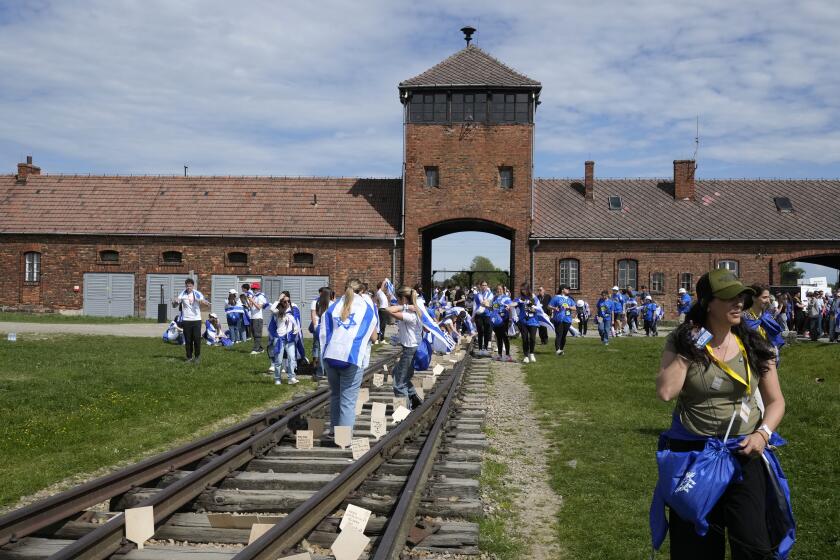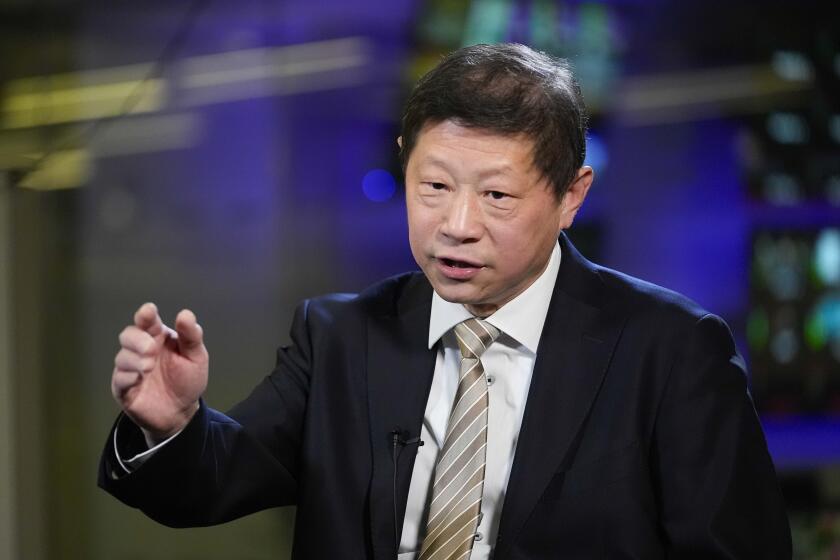Indian Troops Near Control of Tamil Area : But Guerrilla Chiefs Elude Capture, Discouraging Peace Hopes
The besieged Tamil Tiger stronghold of Jaffna was “more or less under control” of Indian troops Friday, but the main guerrilla leader and all his chief lieutenants have so far evaded capture, the senior Indian diplomat in Sri Lanka said Friday.
Indian High Commissioner J.N. Dixit said that Indian troops still faced “pockets of resistance” from the Tigers, the fighting wing of the Liberation Tigers of Tamil Eelam separatist organization.
However, he said there were no reports that Tiger leader Velupillai Prabakaran or any of his senior lieutenants had been caught in the 13-day military offensive on the northern tip of the island.
In fact, Dixit said, Prabakaran is believed to have slipped through Indian lines and reached a hide-out near Mannar, more than 60 miles from the center of the fighting.
Prabakaran, 33, is commander of the Tigers, largest and most powerful of the separatist groups that have fought a four-year war here against the Sri Lankan government. A July 29 agreement between India and Sri Lankan leaders aimed at ending the bloody, ethnic-based conflict, brought the Indian Peacekeeping Force, now estimated to number about 20,000 men, to the island.
Prabakaran enjoys the suicidal devotion of his estimated 2,500 guerrillas. Each Tiger fighter wears a cyanide capsule strung around his neck to swallow rather than be captured alive. It was the suicides of 13 Tigers that began a chain of events that brought the Tigers and Indians into direct military confrontation, starting Oct. 10.
“The main objective of the Indian offensive has been to capture Prabakaran,” Neelan Tiruchelvam, a moderate Tamil political leader, said. “If they don’t succeed in that, they haven’t done very much.”
651 Estimated Dead
Indian officials claimed Friday that they have killed 651 Tigers, more than a quarter of the guerrilla fighting force. However, none of the top eight or nine leaders has been captured.
Prabakaran disappeared from sight early in the Jaffna siege. Since then, his asthmatic deputy Mahatiya Mahendraraja, has coordinated Tiger defenses in Jaffna.
“Essentially, the entire command structure of the Liberation Tigers is under Mahatiya in Jaffna,” Tiruchelvam said. “People have seen him, walkie-talkie in hand, wheezing all the time, giving detailed instruction to the fighters.”
Tiger leader Yogandra (Yogi) Narein, a civil engineer who acts as a spokesman for the guerrillas, was also seen in Jaffna earlier this week by a British journalist.
Two other senior Tiger leaders are believed to be in the eastern district of Batticaloa.
The whereabouts of the remaining three men considered to be senior leaders, including Anton Balasingham, a former sociology lecturer at the London School of Economics, is not known.
Sri Lankan leaders contend that all eight of the top Tiger officers must be caught before the separatist movement can be quelled here.
Dixit, the Indian diplomat, said that the future of attempts by Indian and Sri Lankan leaders to halt the violence on the island and install a political structure “depends on how many of their top leaders are captured and how many fall in line.”
Indian officials said Friday that 136 Indians have been killed and 404 wounded in the conflict, fought mostly in the densely populated neighborhoods of Jaffna city. Tiger spokesmen claimed to have killed more than 300 Indians.
Indian spokeswoman Laxmi Puri said that troops in Jaffna have now surrounded the Nallur temple, where thousands of refugees from the fighting have fled. She said that Indian soldiers are afraid to enter the temple because a battle with a few Tigers hiding there might result in civilian casualties.
Indian officers escorted a small group of journalists into Jaffna on Friday. The only foreign correspondent on the trip, Mark Tully of the British Broadcasting Corp., reported hearing firing near the main fort. He also reported that Indian troops, as they have claimed, had refrained from using artillery to avoid civilian casualties.
More to Read
Start your day right
Sign up for Essential California for news, features and recommendations from the L.A. Times and beyond in your inbox six days a week.
You may occasionally receive promotional content from the Los Angeles Times.

